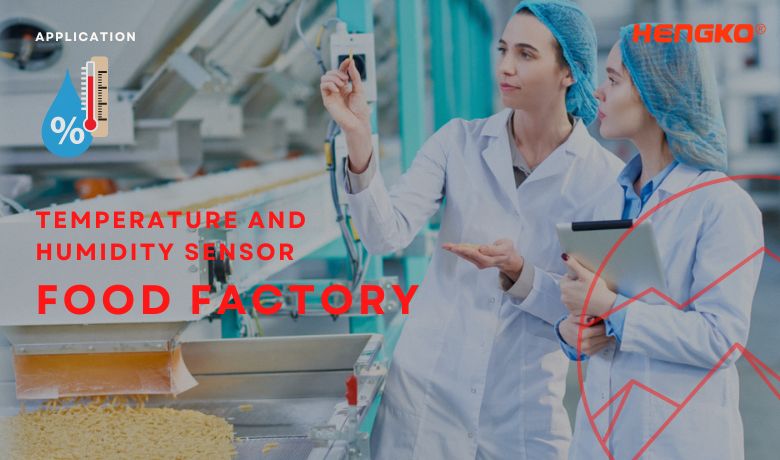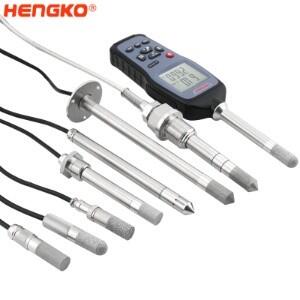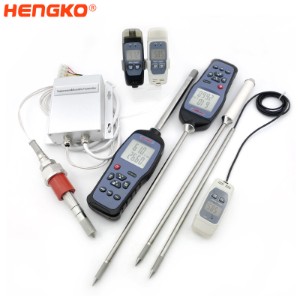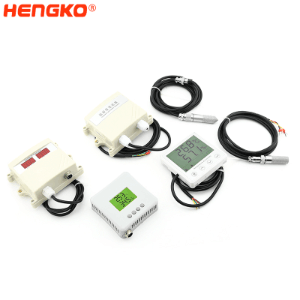
The importance of temperature and humidity management in food factories cannot be overstated. If we do not
manage temperature and humidity properly, it will not only affect the quality and safety index of the products
but sometimes there may even be compliance problems. However, different products and production types
correspond to different regulations and product standards, and food temperature and humidity management is
not a simple matter. This article will introduce determining food factories' temperature and humidity
management requirements, common problems and suggested solutions. HENGKO factory
temperature and humidity sensor solutions will hopefully help companies to carry out better temperature
and humidity management.
I. Requirements of temperature and humidity management in food factories
1. Storage link
In the "daily supervision and inspection of food production and operation points table", Article 55 of the
inspection requirements clearly "warehouse temperature and humidity should meet the requirements"
we need temperature and humidity management according to the different types of products. Especially
the cold chain products, temperature and humidity management is particularly important. From
GB/T30134-2013 "cold storage management specification", we can understand different
Products' temperature and humidity requirements in the storage process.
In addition to cold chain products, some room temperature products in the storage process will also have
temperature and humidity requirements. For example, chocolate products in the GB17403-2016 "Food
Safety National Standard Chocolate Production Health Code" specifies the storage temperature and
humidity requirements for chocolate products.
Storage and transportation of finished and semi-finished products should be based on the category and
nature of the product to choose the appropriate storage and transportation conditions, which can indicate
on the product label to facilitate the transportation and sales process to maintain storage conditions.
Temperature-controlled transport vehicles should meet the temperature and humidity conditions
required by the product. HENGKO cold chain transportation temperature and humidity data logger can
monitor the temperature and humidity data of vehicles at any time, and the staff can make corresponding
adjustment measures according to the change in data.
.
Candy and chocolate products should be placed in a cool, dry place and avoid direct sunlight;
chocolate and chocolate products, cocoa butter chocolate and cocoa butter chocolate products
should be below 30 degrees Celsius, and the relative temperature and humidity should not
exceed 70% of the storage environment to maintain quality; products containing nuts, its storage,
transport conditions set, should also take into account to prevent oxidation and deterioration of
nut-based ingredients and other factors.
Unqualified or semi-finished products should be placed separately in designated areas, clearly
marked, and handled accordingly on time.
2. Processing link
In addition to the storage link, we also need to pay attention to temperature and humidity
management in the processing process, such as the ingredient area, production area,
packaging area, etc. Take the production of frozen meat thawing as an example. For
frozen meat in the process of thawing, you can refer to NY/T 3524-2019 Technical
Specification for Frozen Meat Thawing for temperature and humidity control.
(The static temperature is not higher than 18℃, and the relative humidity of air is
preferably above 90%)
Different Thawing Methods and Requirements:
a. Air thawing. Air quality should be in line with the relevant provisions, and static airflow thawing
temperature should not be higher than 18 ℃, flowing gas thawing temperature should not be
higher than 21 ℃, air relative humidity of 90% or more, wind speed should be 1m / s, thawing
time should not exceed 24h.
b. High-temperature variable temperature thawing. Air quality should comply with the relevant
provisions, the relative humidity of the air in the thawing environment should be higher than 90%,
the thawing humidity should be programmed to change temperature, the surface temperature
of meat should not be higher than 4 ℃, the thawing time should not exceed 4h, the thawing
juice loss rate should not be higher than 3%.
c. Normal pressure water thawing. It is appropriate to thaw with packaging, and thawing water
should be in line with relevant regulations; In hydrostatic thawing, the water temperature should
not be higher than 18 ℃; in running water thawing, the temperature should not be higher than
21 ℃. It should not be in the same water medium to thaw different livestock species of frozen
meat. Thawing time should not exceed 24h.
d. Microwave thawing. Defrosting frequency should be 915 MHz or 2450 MHz, and frozen meat
surfaces should not have water.
II. Frequently Asked Questions
1. Food Factories Do not Understand the Temperature and Humidity Requirements
Due to the variety of raw materials used in the factory, the processing process is complex. The
managers of the enterprises do not pay enough attention to temperature and humidity management.
Some factories have defects in design to ensure that the food factory meets the temperature and
humidity requirements of the storage and processing process of raw materials, semi-finished and
finished products. Some do not understand the need for relevant regulations and product standards
and are negligent in temperature and humidity management.
2. Daily Monitoring Failure
Although food factories are equipped with temperature and humidity meters, they rely on personnel's
daily inspection and records. For the temperature and humidity out of control lack of adequate early
warning, sometimes the frequency of monitoring can not meet the requirements, and even in the
monitoring records, there is the phenomenon of late forgery.
3. Solutions
For our temperature and humidity management of common problems, we first need to understand the
requirements of relevant industry regulations and product standards from the hardware and personnel
capacity to meet the requirements;
Secondly, we can use HENGKO temperature and humidity monitoring instruments to better monitor,
ensuring timeliness and improving efficiency.
4. Summary
Temperature and humidity management in food plants is critical to compliance, safety, and quality
management. Different products and production methods have different temperature and humidity
management requirements. Our food factories need to understand the applicable regulations and standard
requirements to meet the requirements regarding hardware and management. Information technology such
as temperature and humidity sensors help us improve efficiency and accurate management, and
more intelligent means of temperature and humidity monitoring are being used in our food industry.
Any More Questions for Food Factory Temperature And Humidity Management , Please Feel Free
to Contact us by follow contact form or send inquiry by email to ka@hengko.com
Send your message to us:
Post time: Oct-08-2022








